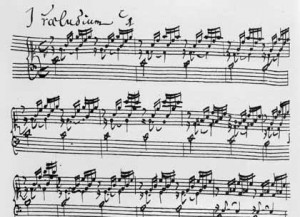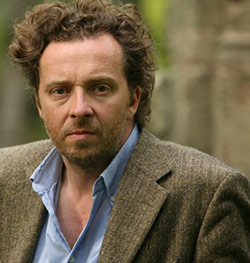The Concert Accordion
Early Beginnings
The accordion has for centuries been associated with music of a light or popular nature. Its portability, full harmonic texture and penetrating, reedy timbre have made it the ideal mini-orchestra for country dances and the perfect one-man house band for city cafés and music halls. The very sound of the accordion oozes nostalgia. Indeed the sound of accordion music has long been cinematic shorthand for identifying a film’s setting as the city of Paris, even before the Eiffel Tower comes into view.
It took a long time to develop the idea that the accordion might be taken seriously as a concert instrument, partly because opportunities for developing skill in performance through professional instruction were few. Then, of course, there was the problem of repertoire. What pieces were there for concert accordionists to play? And finally, the instrument itself needed to be improved, in the way the piano and orchestral instruments had been strengthened and made more versatile in the 19th century, in order to provide a worthy vehicle for the compositional inspirations of major composers.
In the early 20th century, major progress on these issues was made in the Soviet Union, with meaningful contributions from Denmark and England. Folk music, the core of the accordion repertoire, was at the centre of Soviet policy on music education and so the first professional accordion program was established at the Kiev Conservatory in 1927, with similar programs subsequently appearing in Moscow, Leningrad, and other Russian cities.
On May 22, 1935, the renowned accordionist Pavel Gvozdev gave the first accordion recital in the Soviet Union in Leningrad and two years later performed a new concerto for accordion and orchestra by Feodosiy Rubtsov (1904–1986) in the Hall of the Leningrad Philharmonic, events which greatly stimulated interest in the artistic potential of the accordion.
The Accordion Gets a Makeover
Of even greater importance were changes made to the instrument itself in the period following WWII. Two types of accordions were in use. The traditional Russian accordion, the bayan, had buttons on both sides of the bellows while the piano accordion featured a regular piano keyboard on the right and buttons on the left. Both used the Stradella bass system for the left hand, an arrangement of single bass notes over a single octave alternating with buttons that played major, minor, diminished, or dominant 7th chords. While this configuration was ideal for the ‘oom-pah-pah’ pattern of dance music, it represented a serious barrier to composing for the concert repertoire.
With the arrival of the free-bass system with its arrangement of single-note buttons extending over a wide range, accordionists were able for the first time to play bass melodies and create their own chords, instead of having to use the pre-set chords of the Stradella system. In addition, new stops were devised that expanded the range of timbres available on the instrument. The accordion had now become a fully polyphonic instrument, capable of performing in chamber ensembles and of performing transcriptions of classic works in the concert repertoire.
The Modern Accordion
One of the first to exploit the new possibilities of these improvements was the Danish accordionist Mogens Ellegaard (1935–1995) who, from the 1950s onward, challenged composers to write serious works for the accordion. One of his first commissions was the Symphonic Fantasy and Allegro for accordion and orchestra (1958) by the Danish conductor and composer Ole Schmidt (1928-2010).
While the Russian bayan virtuoso Friedrich Lips (b. 1948) moved the bar forward in his country, championing in particular the music of Astor Piazzola, Ellegaard’s student, the Scots-born Owen Murray, brought his teacher’s enthusiasm for the accordion back to Britain. After graduating from the Royal Danish Academy of Music in 1982, Murray made history by being appointed professor of accordion at the Royal Academy of Music in 1986, marking the arrival of academic respectability for the accordion in one of the most prestigious musical institutions in Europe.
Murray’s student at the Royal Academy, Ksenija Sidorova, continues the work of creating a place for the accordion on the concert stage, playing both transcriptions of established works in the classical canon and a growing number of modern and contemporary compositions written specifically for the accordion. She plays an artisan-crafted instrument from the workshops of the Italian manufacturer Pigini in Ancona, considered the Rolls-Royce of accordion-makers. Her instrument (which she calls “the Beast”) has a left-hand range of four and a half octaves, and a special chin-activated stop which allows lightning-fast changes in timbre.
Program Notes
Piotr Londonov
Scherzo-Toccata
Piotr Petrovich Londonov was a prolific contributor to the accordion repertoire through his many arrangements of Slavic and Scandinavian folk songs. This breathless, almost frantic, Scherzo-Toccata is extremely popular among accordionists, judging from how often it has been played at international competitions and the number of YouTube videos of the piece currently online.
Written for bayan virtuoso Friedrich Lips as a test piece for a competition in Geneva in 1979, it combines the repeated-note figuration of the traditional chattering toccata with the repeated short phrase fragments of the scherzo, alternating between sections of purposeful drive and carefree cheerfulness.
From Kesenija Sidorova: Scherzo-Toccata was a compulsory piece for several accordion competitions, and is frequently performed by accordionists all over the world. It is a cheerful short piece, which explores different techniques on this versatile instrument.
Wolfgang Amadeus Mozart
Twelve Variations on “Ah, vous dirai-je, Maman” K. 265
The sheer audacity of writing piano variations on a theme so childlike and innocent as “Ah, vous dirai-je, Maman” (aka “Twinkle, twinkle, little star”) is a gesture uniquely Mozartean in its impertinence. The only modern equivalent would be the fugues based on tunes by Britney Spears that are so impudently posted on YouTube nowadays by composition students with too much time on their hands.
Mozart’s treatment of the theme is for the most part figural. He slices & dices the structural harmonic outline of his thematic material to re-present it with pearly right-hand decorations and insurgent left-hand runs, in coy echoes and ever-so- serious imitative entries, and finally with the obligatory set pieces: a poised and elegant operatic adagio followed by a rousing eggbeater of a finale.
Sergei Rachmaninoff
Barcarolle Op. 10 No. 3
Rachmaninoff completed his group of Salon Pieces Op. 10 in 1894. The third of the set is a barcarolle, a type of character piece patterned after the boat songs of Venetian gondoliers. But the rocking motion typical of the barcarolles of Chopin and Mendelssohn is here given a mere suggestion by Rachmaninoff in the quavering triplet figures that flutter throughout the first section, perhaps in imitation of water lapping at the edge of a boat.
In the middle section, the accompaniment evolves into an animated swirl of frothy running figures that only serve to further emphasize the lonely isolation of the main melody singing out below in the baritone range. This hauntingly timid, rhythmically uncertain melody comes across particularly well in the plaintive reed timbre of the accordion, so well that one could easily imagine this mood piece having been originally written for the instrument.
Anatoly Kusyakov
Autumnal Sceneries
Composer Anatoly Ivanovich Kusyakov paints the autumnal geography of his native Russia in six musical landscapes that employ the full sonorous resources of the accordion. His musical language is a modernist extension of traditional harmony that features dense chordal structures marbled through with contrapuntal motives.
Autumn reveries introduces us to the Russian landscape in a series of bellows-heavy sighs alternating with simpler phrases of a more optimistic stamp. Leaf-fall paints the dance of leaves in the wind with a fast-moving treble scurrying above a slower- moving melody in the bass below. The quirky gate of Soiree Mood conjures a vision of some character out of Mussorgsky’s Pictures at an Exhibition. One could easily imagine the scene of an ugly duckling moving slowly and awkwardly across the landscape.
Forgotten Chimes has a chorale-like dignity reminiscent of Bach’s organ music with its monumental build-up of harmonic tension and instrumental sonority. Cranes describes the passing of majestic birds overhead in a series of soulful dissonant chords over a relentless ostinato bass. The final scene, Wind Dance, is the most virtuosic of the set, featuring both hands moving in fast figuration at a breathless pace.
From Kesenija Sidorova: The first movement, Autumnal reveries, immerses us in the spirit and mood of autumn—rain drops, wind, distant memories of summer. The second movement reminds us somewhat of the last movement (Presto) of Chopin’s B flat minor piano sonata, Op.35, “wind howling around the gravestones”.
The third movement is very picturesque, with interweaving lyrical and wild themes.
The fourth movement, Forgotten chimes, depicts the ruins of the cathedral and the distant sound of the church bells. The fifth movement, Cranes, is inspired by a poem of the same name by Rasul Gamzatov about the souls of the fallen soldiers, who,
“Were buried not in soil to be forgotten,
But turned into white cranes in flight instead.”
The final movement dispels the heavy dark mood with its sarcastic accentuated patterns and melodies inspired by Russian folklore.
Semionov Viatcheslav
Red Guelder-Rose (“Kalina Krasnaya”)
From Kesenija Sidorova: Semionov is regarded as one of the pioneers of the contemporary accordion and is a well-known concert performer, pedagogue, and composer. Since 1995 he has held the title of People’s Artist of the Russian Federation. Guelder Rose was composed in 1976 in memoriam to a great Russian film director, Vassily Shukshin, who directed and acted in the movie of the same name. It was the most successful film of the year (1974) and is widely known even outside of the USSR.
The song is about an unrequited love. It instantly became popular and sometimes is mistakenly regarded as traditional.
Alfred Schnittke
Revis Fairytale
Satire is a powerful force in politics. The Soviet authorities knew this when, in 1978, they banned The Inspector’s Tale, a stage adaptation of Dead Souls, Nikolai Gogol’s 1842 novel satirizing official corruption in czarist Russia. But Alfred Schnittke’s incidental music to this production survived the ban to resurface in in the 1985 ballet Esquisses (Sketches), which added a whole host of other Gogol characters to the mix. The music from this ballet lives on in the suite created by accordionists Yuri Shishkin, Friedrick Lips, and Ksenija Sidorova, entitled Revis Fairy Tale.
This is music with satiric intent woven deep into its fabric. Chichikov’s Childhood attempts to reveal the psychological make-up in early childhood of the central protagonist in Dead Souls, who absurdly seeks to buy from Russian landowners the ownership rights to their deceased serfs. The musical styles of Haydn, Beethoven and Tchaikovsky bear witness to the grotesquely simplistic thinking that was Chichikov’s special gift since birth.
Officials scurries along in mock-bureaucratic haste, helped along by snippets of Mozart’s Magic Flute overture, while Waltz channels Shostakovich’s genre-deflating practices with slow-motion oom-pah-pahs and a comic choice of timbres.
The last piece in the set, Polka, evokes the improvisational whims of the gypsy violinist, starting slow but then accelerating to an exhilarating pace, flickering all the while between major and minor tonalities.
From Ksenija Sidorova: This fairy tale was first transcribed by Russian accordion virtuoso Yuri Shishkin, and subsequently by F. Lips and K. Sidorova. In the first movement, the happy childhood of Pavel Chichikov is polystylistic, combining familiar themes from many sources such as Mozart’s Magic Flute and Tchaikovsky’s Swan Lake.
The waltz represents one of the scenes in Gogol’s Dead Souls, and the last movement, a Polka, recalls the character Akaky Bashmachkin from a short story, The Overcoat, also by Gogol. In the story the hero scrimps and scrapes in order to buy himself an overcoat to replace his threadbare one, but late one night he is mugged by two robbers who steal it. Receiving no help from the authorities, but rather a reprimand, Bashmachkin becomes ill and dies but his ghost haunts the city, stealing other people’s coats in revenge.





